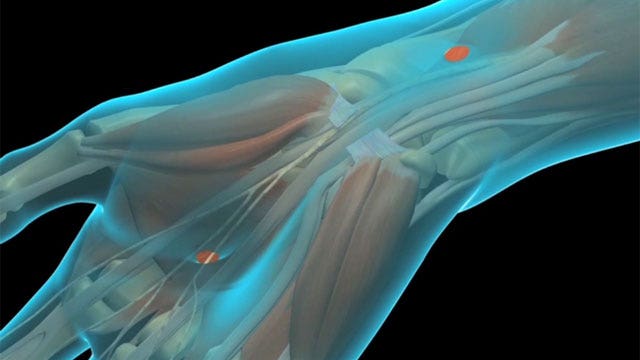What happens during carpal tunnel release surgery?
Under the Knife: Performing repetitive hand movements like typing or sewing can lead to carpal tunnel syndrome. When medication or other treatments don’t provide relief, carpal tunnel release surgery may be necessary. Dr. Manny goes into the operating room to show us exactly how it’s done
People who perform repetitive hand movements, such as typing or sewing, may be at risk for carpal tunnel syndrome. When medication or other treatments do not provide relief, a surgical procedure may be necessary. In fact, over 50 percent of cases will require carpal tunnel release surgery.
When swelling occurs within the enclosed area of the wrist, pressure on the median nerve may cause numbness, tingling and weakness of the affected hand.
At the roof of the carpal tunnel— a narrow, rigid passageway of ligament and bones at the base of the hand— a band of tissue called the transverse ligament is cut to release this pressure and relieve a patient’s symptoms. The most common surgery is an open procedure, in which the surgeon makes an incision from the palm to the wrist, then underlying tissues are dissected to cut the transverse carpal ligament, creating more room for the median nerve.
A newer, minimally invasive procedure is also an option. Tiny keyhole incisions are made for instruments to reach and cut the transverse carpal ligament. Patients have a shorter and less painful recovery period with this endoscopic surgery.
The endoscopic surgery takes between 30 and 90 minutes to perform, and is done as an outpatient procedure.
If you're a risk for carpal tunnel syndrome and want to avoid surgery, try using ergonomic aids like wrist braces or typing pads. Take breaks to reduce irritation, and when possible avoid repetitive wrist motion.
